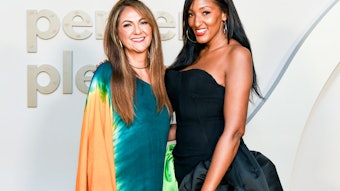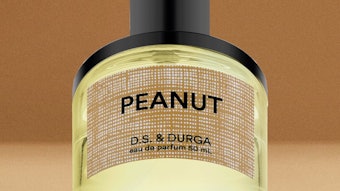Have you heard the phrase “sugar and spice and everything nice—that’s what good girls are made of”? It should come as no surprise, considering that women’s fragrances traditionally have tended toward the sweet, fruity, floral variety with underlying notes of soft spices such as vanilla and cinnamon. On the other hand, rustic notes deemed inherently masculine—like tobacco, cigar smoke, musk, leather, and outdoorsy woods and grasses—still dominate men’s fragrances.
Seems a little outdated, doesn’t it? In today’s modern world, traditional gender roles, boundaries and expectations are experiencing unprecedented change, with an inclination toward self-determination. From bold, masculine women’s suits on Prada runways to an increasing number of men choosing to become stay-at-home dads, it’s clear individuals are becoming more comfortable redefining their views of “masculine” and “feminine” traits across many fronts.
Fragrance is no exception to this gender-blending trend. An increasing number of men and women are both drawn to and are choosing to wear fragrance notes that were once thought appropriate only for the opposite sex.
Gender appropriateness has become a diminishing concern, whether it is in regards to education, profession, or fashion and fragrance trends. As the importance of culturally determined roles declined, the era of unisex or dual-gender fragrance began.
CK One—and One for All
We’re approaching, in fact, the 20-year anniversary of the first big, modern-day debut of the unisex fragrance—the 1994 launch of CK One, the revolutionary award-winning scent that was designed for men and women to share. Is it a cologne or perfume? Who’s to say? Clean, contemporary top notes of green tea and citrus give way to warmer sandalwood and amber for a uniquely universal scent that does not qualify as distinctly pour femme or pour homme.
The public reacted decidedly in favor of this bold move by fragrance developers Alberto Morillas and Harry Fremont—approval equating to $5 million in sales in only 10 days, to be exact. CK One gave young men and women the opportunity to step outside of their assigned gender box (or bottle, in this case) to represent themselves as they wished to be seen—as complex individuals with personalities that ranged from sweet and cheerful to more serious and subdued.
Fragrance is a non-verbal form of communication, possibly as potent a signal of style and personality as the clothes we choose to wear. For young adults who wanted to go beyond the societal constraints placed on them, CK One was a simple step toward liberation. This was not their father’s cologne or their mother’s perfume. It was their own.
It is interesting when people mistakenly refer to this trend as “gender neutral.” Unisex or dual-gender fragrance is anything but neutral. Individuals who choose unisex scents are very much comfortable in their gender—be it masculine or feminine, and they tend to demonstrate notable self-confidence.
“Men still want things that make them feel masculine, but I think the definition of masculinity has evolved,” Karyn Khoury, senior vice president for fragrance development worldwide at The Estée Lauder Companies, said in an Elle magazine interview. She referenced Tom Ford’s Private Blend fragrances, including Tuscan Leather and Jasmine Rouge, saying, “[Ford has] never identified notes as male or female. It’s more about the pleasure and the experience of the scent.”1
The Science of Unisex Fragrance
Scent-driven memories have perhaps the most powerful effects on our fragrance preferences. The overwhelming muskiness of your soccer coach’s aftershave; the floral aroma of mom’s perfume; or the whiffs of earthy moss you might recall from weekends spent camping in the woods with dad all tell us what is masculine and what is feminine.
We assign gender to fragrance primarily due to cultural influence and nostalgia. “No ingredient has a sex,” Givaudan perfumer Marypierre Julien told Elle magazine. “You just smell it, and depending on how much of it you use, it can skew a fragrance more masculine or feminine. We’re seeing more clean, fresh fragrances with notes such as ginger, spicy citrus and galbanum. There are also more fresh aquatic notes and more fruit, which men have become accustomed to in personal care products such as shower gels.”1
H2O Plus, the company I head, designs our vast array of face, body and hair care products with both men and women in mind—and that includes fragrance considerations. In fact, our global best-selling skin care line, Oasis, which was first introduced more than 20 years ago, features a fresh, clean aquatic scent that, like CK One, is ideal for men and women.
H2O Plus’ luxury SPA body care collections such as Sea Salt, Sea Marine, Sea Lotus, and Sea Moss are developed with universally pleasing scent notes of green tea, mint, aquatic florals, citrus and crisp sea grass for true unisex appeal. Most people would not be surprised to find aquatic scents have universal interest and appropriateness.
In fact, the unisex fragrance notes in our broader H2O Plus collections have been so successful at capturing male attention, we just launched a new skin care collection called Oasis Men, featuring a blend of light, aquatic notes that is followed by crisp citrus and clean lavender. The scent finishes with subtle undertones of woodsy vetiver and smooth sandalwood.
Back To Basics
As exciting as the introduction of CK One was to the fragrance industry, it turns out that the “shared” fragrance trend was not a modern invention. In fact, throughout recorded history, men and women alike wore scents distilled from rose, violet, lavender, honeysuckle and mint. It wasn’t until 1709, when Napoleon designated himself a signature scent consisting of grape spirits, citrus oils and herbs and encouraged his soldiers to use this eau de cologne, that the modern concept of a masculine scent born.
Designer Tom Ford predicts one day all scents will be unisex, telling Allure magazine: “It may seem like a trend now, but eventually it will be as common as women wearing pants.”2
Another way to think about this trend is by considering the findings of food industry researchers. It turns out your olfactory sense (your nose) is responsible for more than 70% of your taste experience, so it would stand to reason that food preferences could be segmented as masculine or feminine. Steak for men and crème brulee for women? The truth is, both men and women enjoy savory, herb-seasoned meats and sweet, aromatic desserts. The same sensory organ that makes savory and sweet foods universally appealing is more than happy to indulge in a variety of fragrance experiences, too.
So, where do you begin? If I were to provide you with any guidance on your fragrance journey, I would quote my favorite bird, Toucan Sam, and say, “Follow your nose … it always knows!”
References
- www.elle.com/beauty/makeup-skin-care/mens-fragrance-trend-unisex-appeal-610463 (Accessed Oct. 16, 2013)
- www.allure.com/beauty-trends/2008/uncommon_scents (Accessed Oct. 16, 2013)
Rick Ruffolo is the president and CEO of H2O Plus. Ruffolo’s 20+ year career includes significant expertise in general management, marketing, strategic planning, innovation and multi-channel specialty retail experience. He started his career in brand management at Procter & Gamble, and has had extensive executive leadership roles in the beauty and home fragrance categories as president and CEO of R4 Innovations, executive vice president of Crabtree & Evelyn’s global business, senior vice president at Yankee Candle, vice president and general manager at Bath & Body Works, and category director at SC Johnson. He is also a member of the GCI editorial advisory board.










